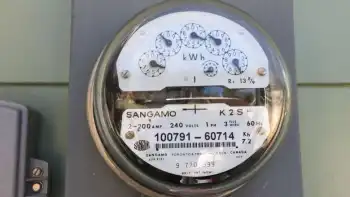Nuclear Power Plant Deal Inked in China
The project involves the installation of two 650-megawatt nuclear power generating units which are expected to entail 15 billion yuan (US$1.85 billion) in investment, said Li Yongjiang, chairman of Nuclear Power Qinshan Joint Venture Co Ltd.
The equipment SEG will provide includes conventional island electric generators, nuclear island steam generators, reactor core internals and control rod drive mechanism.
"This is China's first effort to design and manufacture 650- megawatt nuclear power generating units using its own technology," said SEG Chairman Wang Chengming.
Equipment will be delivered to the station in 2008 and the expansion project will be completed in 2010.
The station put two 600-megawatt nuclear power generating units into operation in 2004 as part of its second phase with an investment of 14.2 billion yuan (US$1.75 billion).
"The units are running smoothly and efficiently," said Li.
The two new 650-megawatt units aim to solve power shortages in East China, Wang said.
China started building nuclear power stations in 1985 with the launch of a project in Zhejiang's Qinshan Town. It had a 300- megawatt unit in its first phase, with an investment of 1.7 billion yuan (US$200 million).
In the third phase, two 700-megawatt units costing about US$2.9 billion were installed using Canadian technologies. The project was completed in 2003.
Qinshan Nuclear Power Station now has a capacity of 2,900- megawatt generating units, making it a major nuclear power base in China.
According to Wang Shoujun, deputy general manager of China Nuclear Industry Group Company, China is actively working towards the development of the nuclear power industry.
"More nuclear power stations will be built by 2020," Wang said.
Currently, electricity generated by coal accounts for 74 per cent of the total power; hydropower, 24 per cent; and nuclear power, 1.6 per cent.
China is expected to increase the capacity of its nuclear power generation from the current 8,700 megawatts to 40,000 megawatts in 2020, he said.
"But even then, it will only meet 4 per cent of the country's power needs," said Wang Wenda, a senior engineer in the Nuclear Power Office of SEG's Power Generation Group.
The proportion is far behind France's 78 per cent and Japan's 35 per cent, he said.
To reach the 4 per cent target, China will set up more than 30 1,000-megawatt units by 2020, he said.
"China plans to import the third generation of nuclear power technology to step up its power industry," Wang Wenda said.
Related News

Germany's Call for Hydrogen-Ready Power Plants
BERLIN - Germany, a global leader in energy transition and environmental sustainability, has recently launched an ambitious call for tenders aimed at developing hydrogen-ready power plants. This initiative is a significant step in the country's strategy to transform its energy infrastructure and support the broader goal of a greener economy. The move underscores Germany’s commitment to reducing greenhouse gas emissions and advancing clean energy technologies.
The Need for Hydrogen-Ready Power Plants
Hydrogen, often hailed as a key player in the future of clean energy, offers a promising solution for decarbonizing various sectors, including power generation. Unlike fossil fuels, hydrogen produces…




